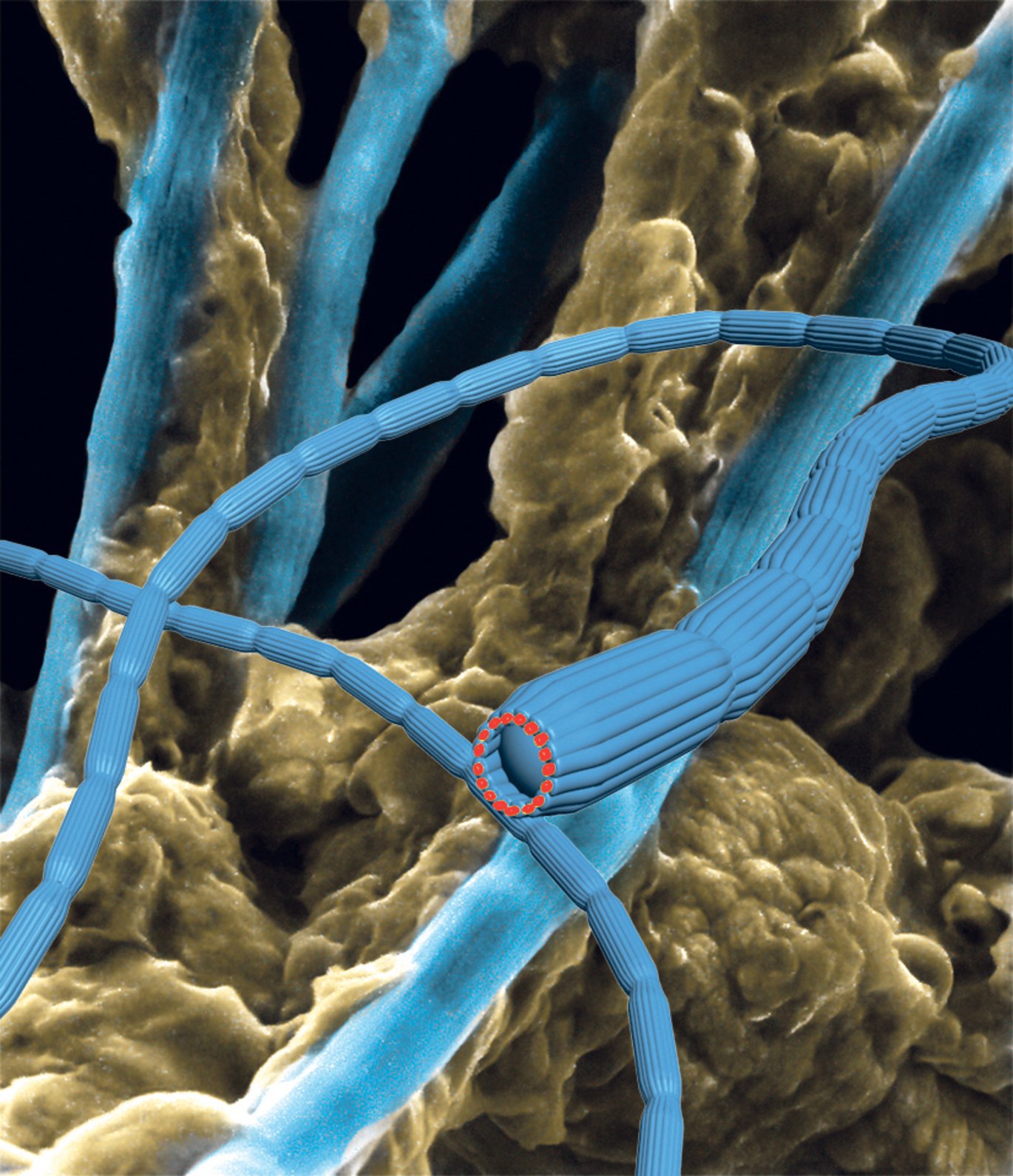Living cables explain enigmatic electric currents
The enigma of electric currents in the sea bed has been solved. Scientists at Aarhus University have sensationally discovered bacteria that function as living electric cables. Each one of the centimetre-long "cable bacteria" contains a bundle of insulated wires leading an electric current from one end to the other.

Electricity and sea water are usually a bad mix. Scientists at Aarhus University were therefore very surprised a few years ago when they discovered electric currents between biological processes in the sea bed. Since then, they have been searching for an explanation and – along with partners from the University of Southern California, USA – they have now presented sensational results in Nature.
“Our experiments showed that the electric connections in the sea bed had to be solid structures built by bacteria,” says PhD student Christian Pfeffer, Aarhus University.
He was able to interrupt the electric currents by pulling a thin wire horizontally through the sea floor – just as when an excavator cuts electric cables.
In studies under the microscope, the scientists found a hitherto unknown type of long, multicellular bacteria that were always present when they measured the electric currents.
“The incredible idea that these bacteria should be electric cables really fell into place when we saw wire-like strings enclosed by a membrane inside the bacteria,” says Nils Risgaard-Petersen, Aarhus University.
Kilometres of living cables
The bacterium is one hundred times thinner than a hair and the whole bacterium functions as an electric cable with a number of insulated wires within it – quite similar to the electric cables we know from our daily lives.
“Such unique insulated biological wires seem simple, but they are incredibly complex at nanoscale,” says PhD student Jie Song, Aarhus University, who used nanotools to map the electrical properties of the cable bacteria.
In an undisturbed sea bed, tens of thousands of kilometres of cable bacteria live under one single square metre of the sea bed. Their ability to conduct an electric current provides cable bacteria with such considerable benefits that they conquer much of the energy from decomposition processes in the sea bed.
Unlike all other known forms of life, cable bacteria maintain an efficient combustion down in the oxygen-free part of the sea bed. All it needs is for one end of the individual to reach the oxygen provided by sea water in the top millimetres of the sea bed. The combustion is a transfer of the electrons from food to oxygen, which the bacterial inner wires manage over centimetre distances. However, small disturbances can lead to fatal "cable breakage" in the fragile bacteria.
Biological innovation
“On the one hand, it is still very unreal and fantastic. On the other hand, it is also very tangible,” says Professor Lars Peter Nielsen, Aarhus University, who is in charge of exploring the natural electric currents.
Along with a number of international collaboration partners, sever-al scientists at Aarhus University are already addressing the new and exciting questions that arise. These range from the understanding of bioelectronics at the molecular level to the role of cable bacteria in the history of the Earth.
The future will tell whether this wondrous result of biological evolution can also be used in new types of electronics.
The article in Nature
"Filamentous bacteria transport electrons over centimetre distances" by
- Christian Pfeffer
- Steffen Larsen
- Jie Song
- Mingdong Dong
- Flemming Besenbacher
- Rikke Louise Meyer
- Kasper Urup Kjeldsen
- Lars Schreiber
- Yuri A. Gorby
- Mohamed Y. El-Naggar
- Kar Man Leung
- Andreas Schramm
- Nils Risgaard-Petersen
- Lars Peter Nielsen
Read the article at nature.com
